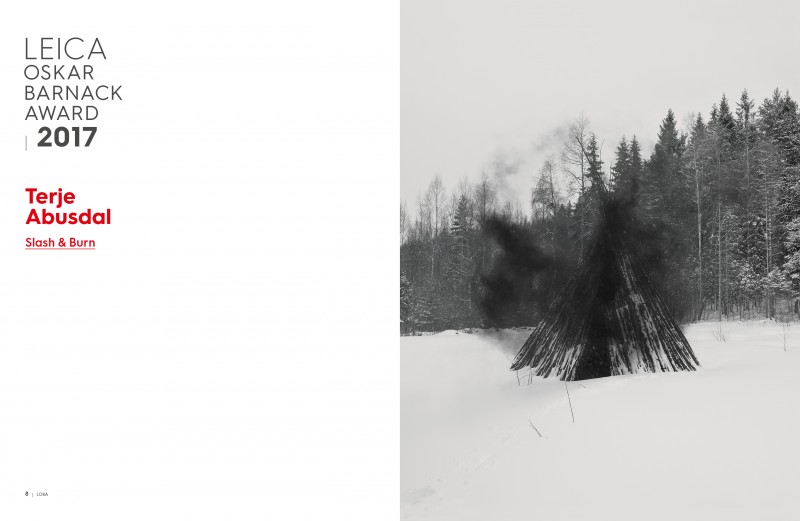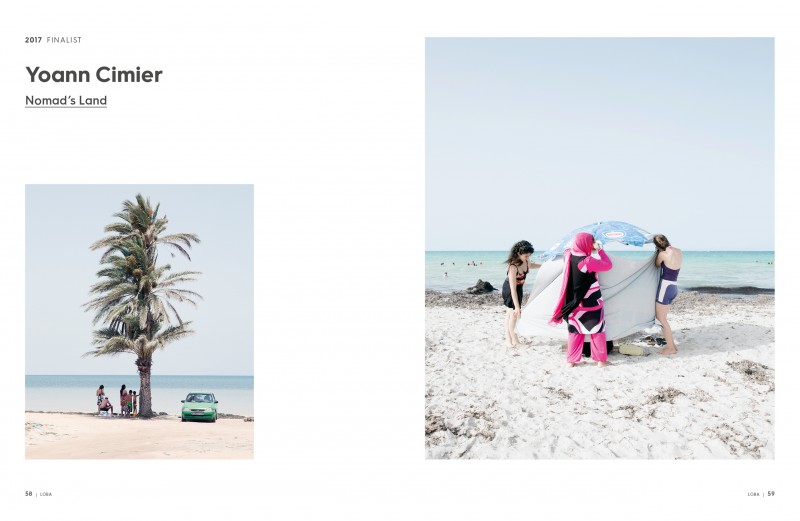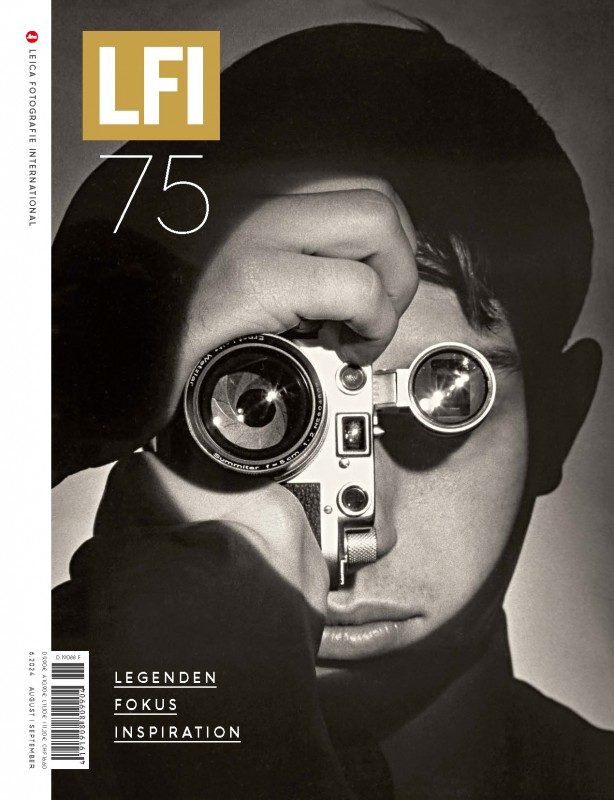LFI Sonderhefte - Leica Oskar Barnack Award 2017
In dieser Ausgabe
Interview with Douglas So
Terje Abusdal: They migrated from Finland to Sweden a number of centuries ago, settling areas that are part of Sweden and Norway today. Slash and burn agricultural techniques were a central part of their culture. Countless generations later they are still living there: the Forest Finns. A documentary approach with a mystical touch.
Patrick Willocq: The French photographer’s series was produced with the Dagomba, an ethnic group living in the north of Ghana. In close collaboration with these people, Patrick Willocq developed six decorative stages loaded with symbolism, reflecting the past, present and future of the Dagomba.
Aleksey Kondratyev: Improvised tents to protect against the cold, or Arte Poverastyle installations? Aleksey Kondratyev’s Ice Fishers series is dedicated to plastic shelters built by Kazakh fishermen as protection against frigid winter temperatures. A photo series that explores the borderline between art and documentation.
Dominic Nahr: 11 March, 2011: the most powerful earthquake in Japan’s history produced a worse-case scenario at the Fukushima nuclear power plant. Dominic Nahr has visited the area ten times since then. What can you show when there is nothing there to see? The photographer’s quiet images capture the latent threat.
Ekaterina Sevrouk: Landscape motifs that are reminiscent of classic paintings from the era of German Romanticism; yet, the presence of African men in the pictures infringes on the viewers’ expectations. The outcome is a fruitful dialogue between a well-known form of imagery and contemporary politics.
Yoann Cimier: Makeshift shelters, tarps billowing in the wind, quickly knocked together wooden shacks under a scorching sun – Yoann Cimier explored the beaches of Tunisia for his Nomad’s Land Series. There the photographer found a micro-cosmos that brought to mind Bedouin traditions: temporary yet very functional.
Gideon Mendel: The water has taken everything away from them – all that remains are their lives. As one element of his Drowning World long-term project, Gideon Mendel portrays victims of flooding all over the planet, hoping to turn the abstract expression ‘climate change’ into something more concrete.
Emilien Urbano: French photographer Emilien Urbano has been documenting the struggle of the Kurds in Iraq, in Syria and in Turkey, since the summer of 2014. It is a fight on various fronts, with various goals, with changing opponents and changing allies – it is all about autonomy and putting down the so-called Islamic State.
Viktoria Sorochinski: Sorochinski initially returned to Ukraine in search of her family roots and the places of her childhood memories. However, the journey turned into a longterm portrait of a culture that is in the process of disappearing. The photographer has found a universal imagery to convey the corresponding feeling of loss.
Clara Chichin: Hauntingly beautiful, mysterious images in contrasting black and white – this is how Clara Chichin’s radically subjective photography can be characterised. I photograph, therefore I am. She establishes her presence in the world, with pictures so extremely grainy that all superfluous information seems to fade away.
Vera Torok: Shimmering lights, colourful shop windows, hurrying pedestrians, thick traffic: capturing as many facets as possible of everyday, urban life was the basic idea behind the series. However, in addition to patience and a fine sense for the moment, it took a fortuitous accident to produce the desired result.
Sergey Melnitchenko: It would be hard to get any closer than the Ukrainian, Sergey Melnitchenko, got to his protagonists: he himself worked as a dancer in the Chinese dance club where his series about the joys and sufferings of backstage life was taken. Up close and personal, he takes a look behind the scenes of the cheap entertainment business.
Winners & Finalists 2017
Winners 1980 – 2016
Terje Abusdal: They migrated from Finland to Sweden a number of centuries ago, settling areas that are part of Sweden and Norway today. Slash and burn agricultural techniques were a central part of their culture. Countless generations later they are still living there: the Forest Finns. A documentary approach with a mystical touch.
Patrick Willocq: The French photographer’s series was produced with the Dagomba, an ethnic group living in the north of Ghana. In close collaboration with these people, Patrick Willocq developed six decorative stages loaded with symbolism, reflecting the past, present and future of the Dagomba.
Aleksey Kondratyev: Improvised tents to protect against the cold, or Arte Poverastyle installations? Aleksey Kondratyev’s Ice Fishers series is dedicated to plastic shelters built by Kazakh fishermen as protection against frigid winter temperatures. A photo series that explores the borderline between art and documentation.
Dominic Nahr: 11 March, 2011: the most powerful earthquake in Japan’s history produced a worse-case scenario at the Fukushima nuclear power plant. Dominic Nahr has visited the area ten times since then. What can you show when there is nothing there to see? The photographer’s quiet images capture the latent threat.
Ekaterina Sevrouk: Landscape motifs that are reminiscent of classic paintings from the era of German Romanticism; yet, the presence of African men in the pictures infringes on the viewers’ expectations. The outcome is a fruitful dialogue between a well-known form of imagery and contemporary politics.
Yoann Cimier: Makeshift shelters, tarps billowing in the wind, quickly knocked together wooden shacks under a scorching sun – Yoann Cimier explored the beaches of Tunisia for his Nomad’s Land Series. There the photographer found a micro-cosmos that brought to mind Bedouin traditions: temporary yet very functional.
Gideon Mendel: The water has taken everything away from them – all that remains are their lives. As one element of his Drowning World long-term project, Gideon Mendel portrays victims of flooding all over the planet, hoping to turn the abstract expression ‘climate change’ into something more concrete.
Emilien Urbano: French photographer Emilien Urbano has been documenting the struggle of the Kurds in Iraq, in Syria and in Turkey, since the summer of 2014. It is a fight on various fronts, with various goals, with changing opponents and changing allies – it is all about autonomy and putting down the so-called Islamic State.
Viktoria Sorochinski: Sorochinski initially returned to Ukraine in search of her family roots and the places of her childhood memories. However, the journey turned into a longterm portrait of a culture that is in the process of disappearing. The photographer has found a universal imagery to convey the corresponding feeling of loss.
Clara Chichin: Hauntingly beautiful, mysterious images in contrasting black and white – this is how Clara Chichin’s radically subjective photography can be characterised. I photograph, therefore I am. She establishes her presence in the world, with pictures so extremely grainy that all superfluous information seems to fade away.
Vera Torok: Shimmering lights, colourful shop windows, hurrying pedestrians, thick traffic: capturing as many facets as possible of everyday, urban life was the basic idea behind the series. However, in addition to patience and a fine sense for the moment, it took a fortuitous accident to produce the desired result.
Sergey Melnitchenko: It would be hard to get any closer than the Ukrainian, Sergey Melnitchenko, got to his protagonists: he himself worked as a dancer in the Chinese dance club where his series about the joys and sufferings of backstage life was taken. Up close and personal, he takes a look behind the scenes of the cheap entertainment business.
Winners & Finalists 2017
Winners 1980 – 2016
Neueste Ausgaben
















